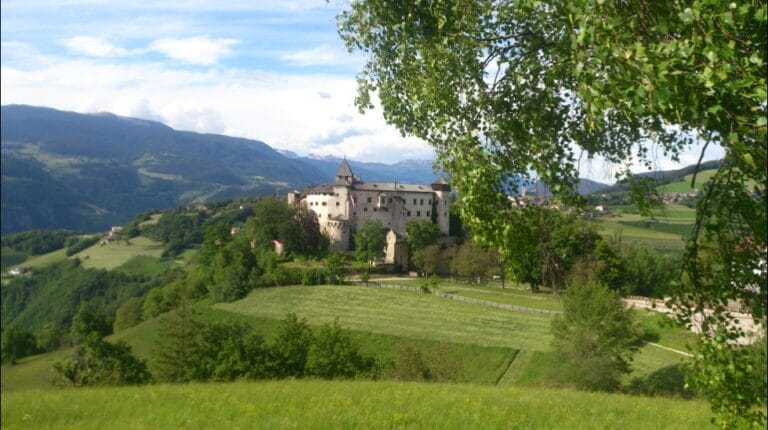Neuhaus Castle: A Medieval Fortress in Northern Italy
Visitor Information
Google Rating: 4.5
Popularity: Low
Google Maps: View on Google Maps
Official Website: www.schloss-neuhaus.com
Country: Italy
Civilization: Medieval European
Remains: Military
History
Neuhaus Castle, also known by its Italian name Castel Casanova, stands in the municipality of Gais in northern Italy. It was established during the medieval period by the lords of Taufers, a local ruling family, amid territorial conflicts with rival nobles.
Construction of the castle took place between 1240 and 1245, strategically positioned at the entrance of the Val di Tures to control access to the valley. The name “Neuhaus,” meaning “New House,” referred specifically to this fortified site. However, it is important to note that while the castle served as a stronghold, the Taufers family did not inhabit it as their main residence, choosing instead the larger and more strategically situated Castle of Tures nearby.
In 1248, Bishop Egno of Bressanone sought to have the castle demolished, indicating the tensions between secular and ecclesiastical powers during that era. Despite this request, the demolition never occurred, allowing Neuhaus Castle to endure through subsequent centuries.
The castle’s ownership shifted multiple times over the Middle Ages and early modern period. It gradually fell into disuse and decline, though its keep (mastio) and parts of the surrounding walls remained standing. In the early 15th century, from 1422 to 1426, the castle was administered by Oswald von Wolkenstein, a notable poet and composer of the late medieval period, who found inspiration for his creative works in the nearby Tures valley.
A small chapel was added within the castle’s lower courtyard in 1601, marking an ongoing religious dimension to the site. Later, in 1752, Count Künigl constructed the Pfleghaus, a caretaker’s house in Baroque style at the base of the hill, which would eventually evolve into an important workshop for artists under the Bacher family.
In the early 20th century, starting in 1914, efforts were made to restore the castle, particularly rebuilding the residential wing on the foundations of the original structure. Since 1924, Neuhaus has been owned by Count Cäsar Straßaldo-Grafenberg, who shaped its current appearance. During the Second World War, the castle offered refuge to the American poet Ezra Pound and his family, connecting it once again to literary history.
Today, ownership remains in private hands, with Siegfried Hofer—a descendant of a local farming lineage—as the current proprietor. The castle continues to be a site for cultural activities and gatherings, maintaining traditions such as the “Knights of Neuhaus,” who hold periodic meetings.
Remains
Neuhaus Castle sits prominently at the gateway to the Val di Tures, comprising a medieval fortress complex that has preserved key elements despite centuries of decay. The core feature is its medieval keep, or mastio, which served as the central stronghold and remains one of the most intact parts of the original fortification. Surrounding this tower, portions of the perimeter walls survive, offering a glimpse into the defensive structure that once encircled the castle.
The residential palace wing, although lost for a time, was carefully reconstructed beginning in 1914 using the foundations of the original building. This restoration helps convey the castle’s medieval domestic arrangements as they would have appeared during its initial period of use.
Within the lower courtyard stands a small chapel built in 1601, adding a spiritual element to the castle grounds. This chapel remains accessible and testifies to the site’s continued religious significance through the early modern era.
At the base of the hill lies the Pfleghaus, or caretaker’s house, erected in 1752 by Count Künigl. This structure reflects Baroque architectural styles and later took on new life as a creative workshop under the Bacher family, linking the castle complex to regional artistic traditions beyond its military and residential functions.
While most of the castle is privately owned and closed off to general visitors, the tavern and chapel are accessible, allowing a connection to the historical site. Over time, restorations and conservation have focused on stabilizing the remaining medieval elements and maintaining the integrity of later additions, preserving Neuhaus Castle’s layered history in its current form.







